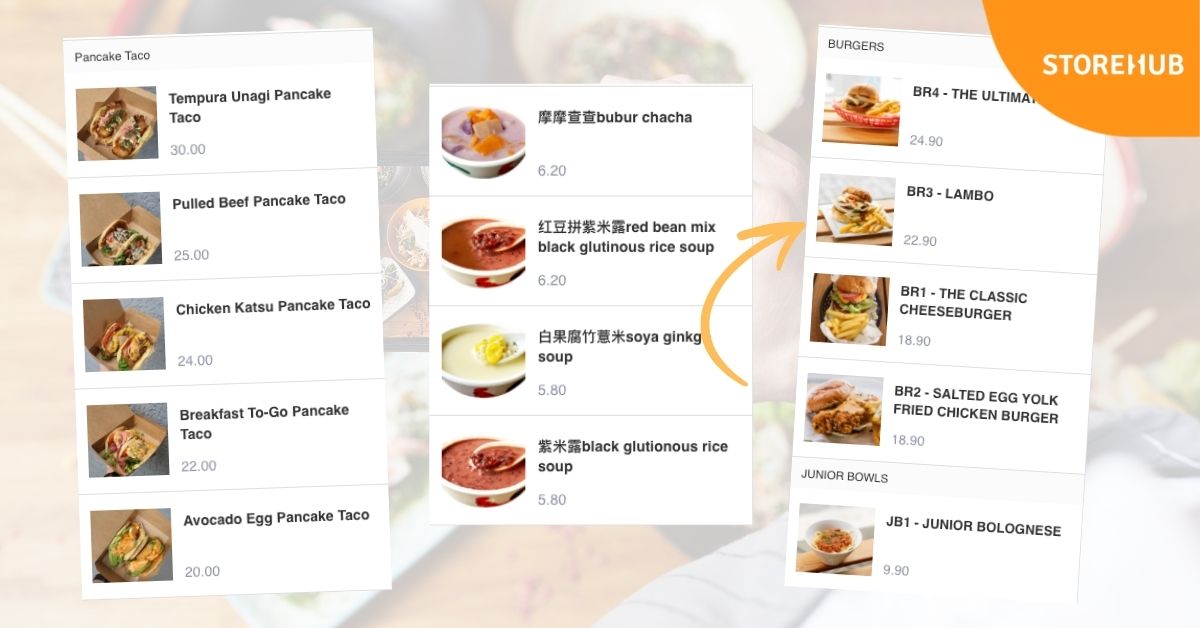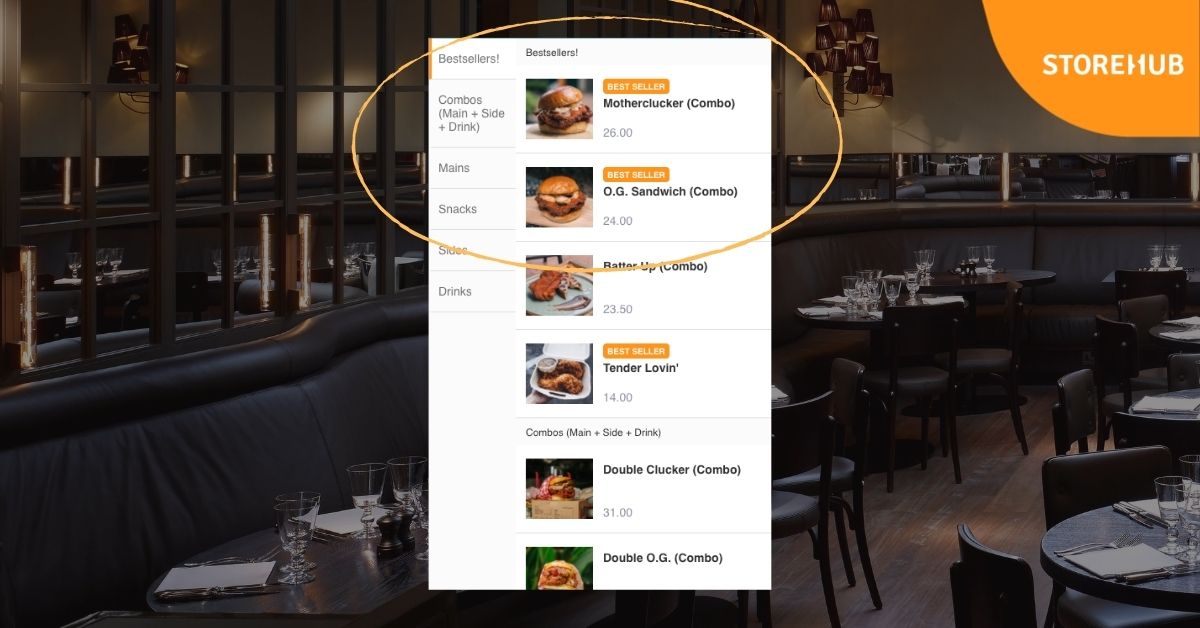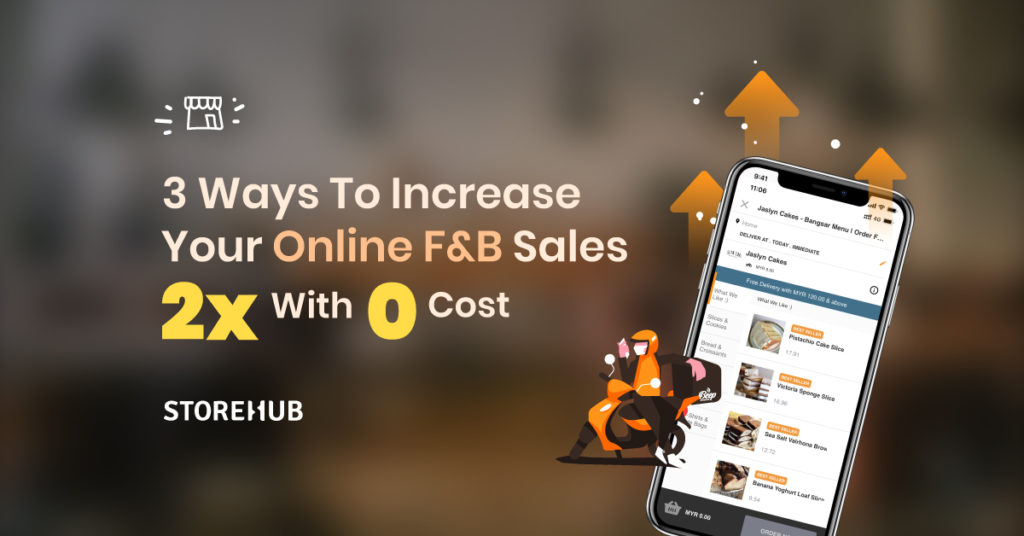Looking for the quickest sure-fire way to increase your online food and beverage sales?
Increasing your sales doesn’t always have to mean spending money. According to StoreHub’s internal data, these 3 tried and proven strategies have doubled sales at 0 cost.
The best part is, you can implement these 3 tips right away!
Ready to drive more online F&B sales than ever before? Let’s dive right in.
1. Use food photos that’ll persuade customers to order

Did you know that a good quality food photo is guaranteed to boost sales by 30%?
This is because customers are more likely to place an order when there’s a photo beside each online menu item.
People eat with their eyes first so a good food photo is what ultimately shapes their purchase decision.
For example, when deciding to order food, you’ll usually decide to go with the dish that looks the most appetising.
A high-quality photo will not only entice customers to order the mouth-watering dish, but it’ll also remove any potential doubts about the quality of the food.
This means having good photos of your dishes can help to increase sales and build trust.
Wondering how to take amazing food photos with just your phone?
Check out these 5 food photography tips that are proven to make people hungry!
2. Tempt customers with your food and beverage descriptions

Another key decision-making factor for online food and beverage sales is the menu description.
Menu item descriptions serve as an invitation to your dishes so it’s important to spend time writing food descriptions that sells.
The best way to do so is by telling a story in your description and using lots of adjectives. This will help stimulate your customer’s appetite and imagination.
The goal is to tempt your customers into ordering whilst also letting them know what’s included in the dish itself.
Here are a few best practices to follow:
- Use adjectives that imply there are talented chefs at work e.g. “slow-cooked lamb chops marinated with a garlic-infused citrus sauce”
- Utilise cultural/geographical terms to make it sound more expensive and/or better quality e.g. “Cajun-style prawns” “locally-sourced ingredients” “Italian meatballs”
- Use nostalgic language to name your menu items e.g. “Ah Ma’s Fried Noodle” vs “Fried Noodle”
- Incorporate dietary restrictions and religion e.g. “gluten-free”, “halal product” “vegan-friendly”
It’s also important to remember that you shouldn’t over-complicate the menu description. Try to use words that are easy to read and understand, and those that don’t require the customer to google the word meaning.
To learn more about menu design, read on here!
3. Highlight your best-selling item

People like doing things that others enjoy.
So adding social proof to your products can easily influence the decisions your customers make.
For example, if there’s a dish many customers tend to order, list this as a “best-seller” or “highly-recommended by the chef”. Just by doing this, other customers will be more enticed into ordering this dish as it’s been liked by many others.
This is known as the bandwagon effect.
Add this best-selling item to the top of your online menu to increase visibility as it’ll be the first thing people see. It’ll also make the ordering experience more user-friendly as customers will instantly be able to click on the top item instead of scrolling through the entire menu to find what they want.
After all, the faster the ordering process, the quicker the checkout which results in more sales!
Therefore it’s useful to know at a glance what your best-selling items are, and StoreHub’s reporting feature makes it easy!
StoreHub offers a huge database of reporting information that provides extremely valuable insights to help your business grow.
You’re able to automatically generate and export your best-selling product report, transactions report, sales report, inventory report…. basically, any report that you can think of!
Additionally, StoreHub’s reporting data is cloud-based so it’s safely stored and accessible anytime and anywhere.
Power your business with StoreHub





